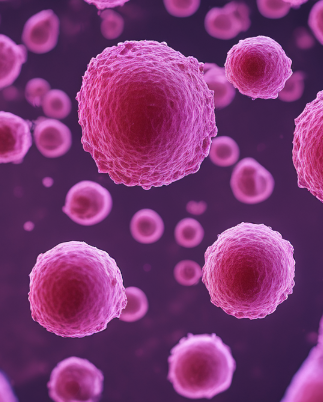
Researchers have identified new variations in neuroblastoma that could lead to a more accurate prognosis and better-targeted treatments for this devastating childhood cancer.
A study published in theBritish Journal of Cancer reveals three new subgroups of the most common type of neuroblastoma, each with different genetic traits, expected outcomes, and distinguishing features that offer clues as to which treatments may be most effective. Dr Yihua Wang from the University of Southampton, a senior author on the paper said: “This research represents a pivotal advancement in our understanding of MYCN non-amplified neuroblastomas. The results are striking. These kinds of neuroblastomas can be classified into three distinct subgroups, each demonstrating unique prognostic implications and varying vulnerabilities to investigational therapies.”
Around 100 children are diagnosed with neuroblastoma each year in the UK, representing six to ten per cent of all childhood cancers. Neuroblastoma is a cancer that starts in a type of nerve cell called a neuroblast. It can present in the abdomen, chest neck or pelvis and can spread to other parts of the body. The overall prognosis of the disease is poor, with just 20 per cent of patients still alive at 5 years after diagnosis, but the likelihood of the cancer being cured varies widely, with some tumours spontaneously regressing and others proving resistant to therapy and progressing.
One of the key indicators of risk is the amplification of a gene called MYCN, where tumours have too many of this type of gene. This occurs in around 20 per cent of cases and accounts for about 40 per cent of high-risk neuroblastomas.
Researchers from the University of Southampton and China wanted to find out more about cases where the MYCN gene isn’t amplified to better understand the diversity of outcomes within these cases. Using advanced analytical techniques, the research team analysed over 1,500 biopsy samples from 16 different datasets sourced from Gene Expression Omnibus (GEO) and ArrayExpress. The team were able to identify three distinct subtypes of these MYCN non-amplified cases based on their transcriptional signatures – patterns of gene expression that can provide valuable insights into biological processes.
The first subgroup makes up around half of MYCN non-amplified cases and has the best prognosis, with a long-term survival rate of over 85 per cent, despite some cases being clinically classified as high risk.
Subgroup 2, representing a quarter of MYCN non-amplified cases, had the worst outcomes with a long-term survival rate of 50%. Interestingly, this group had a similar genetic signature to cases where MYCN is amplified. Researchers found a protein called Aurora Kinase A (AURKA) was expressed at significantly higher levels than in the other two subgroups. On further analysis, they found that AURKA mRNA levels alone could predict overall survival. This suggests that patients within the subgroup may benefit from treatment with AURKA inhibitors. Meanwhile, Subgroup 3, which made up another quarter of MYCN non-amplified cases, is characterised by an ‘inflamed’ gene signature, with significantly higher levels of activity in immune cells. Further analysis indicates that patients in this subgroup were predicted to respond better to immunotherapy.
Dr Wang added: “This research opens new avenues for personalised medicine in the treatment of neuroblastomas. By leveraging transcriptional subtyping, we are now equipped to offer more precise prognosis and tailor therapies accordingly for patients with MYCN non-amplified neuroblastomas, potentially improving outcomes and quality of life.”
The project was supported by the UK Medical Research Council and the Natural Science Foundation of China.
British Journal of Cancer: “Identification of MYCN non-amplified neuroblastoma subgroups points towards molecular signatures for precision prognosis and therapy stratification”. DOI: 10.1038/s41416-024-02666-y
